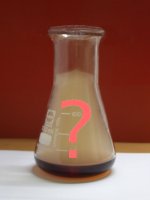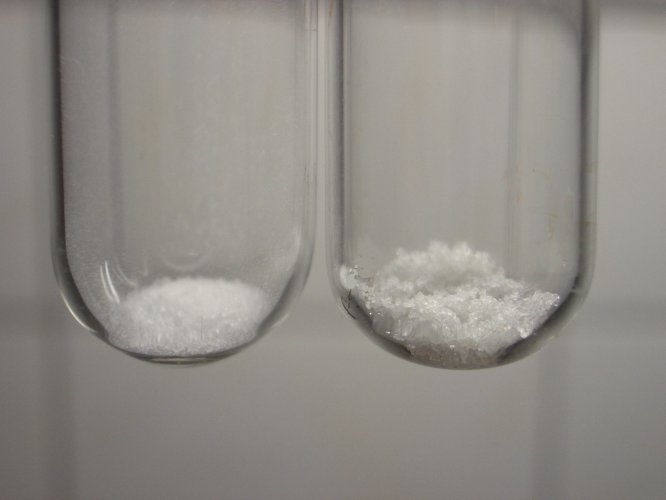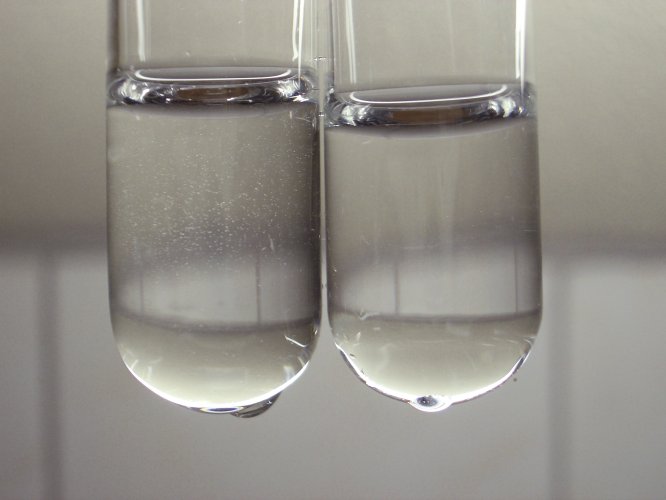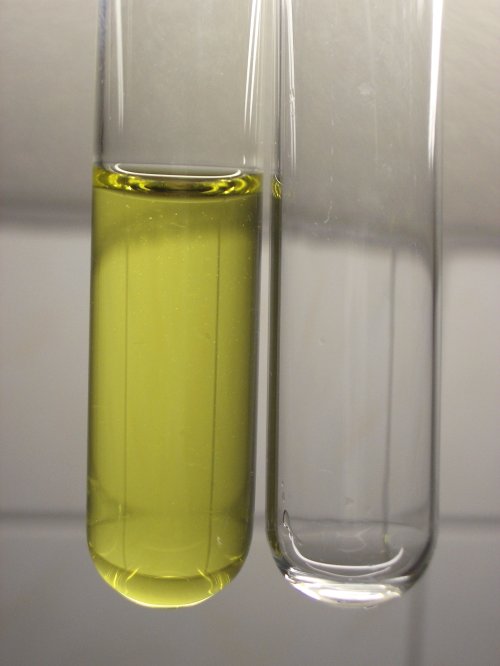


Riddle: Iodide and sulfur dioxide
According to text books, iodide and sulfite should not react with each other. Sulfite is capable of reducing iodine to iodide, itself being oxidized to sulfate. That reaction is known well from literature and sometimes also is used in analytic chemistry.
A reaction, hardly known however, is that between iodide and sulfite. This reaction only occurs in acidic environments, the exact nature of the acid not being relevant. So essentially, the reaction is not between iodide and sulfite, but between iodide and sulfur dioxide, which is formed on acidification of the sulfite.
This experiment is remarkably simple and yet striking. It has puzzled the author to quite some extent. A lengthy discussion of this reaction can be found on Usenet, group sci.chem. Finally the issue was settled and the complex was identified as [I·nSO2]–. The search keys 'sulfite' and 'iodide', when combined in the group-search field, yield the different discussions about this reaction.
![]()
![]() Required chemicals:
Required chemicals:
-
dilute sulfuric acid (approximately 5% by weight)
- potassium iodide
- sodium sulfite
![]() Required equipment:
Required equipment:
-
test tubes
![]() Safety:
Safety:
- Dilute sulfuric acid is fairly corrosive.
- A small amount of sulfur dioxide is formed. This might be irritating. If this is the case, then it is best to perform the experiment outside.
![]() Disposal:
Disposal:
-
The chemicals, used in this experiment, can be flushed down the drain with a large amount of water.
![]()
Mixing acidic solutions of sulfite and iodide
Put some solid sodium sulfite and solid potassium iodide in two separate test tubes and then add some dilute acid to both of them. This results in two colorless liquids with the solids dissolved in the acid. In the pictures below, the sulfite is in the left test tube and the iodide is in the right test tube.


At this stage a definite smell of sulfur dioxide can be noticed, emanating from the left test tube.
Add the liquid from the right test tube to the liquid in the left test tube. Immediately the liquid becomes bright yellow.

The bright yellow color is not what was expected. According to schoolbook chemistry, sulfur dioxide and iodide are not supposed to react with each other. The reaction, shown here, is not a redox reaction, in which the iodide is oxidized to iodine, because of the fact that the sulfur dioxide is a fairly strong reductor.
![]()
Discussion of the results
The yellow compound indeed seems not be iodine or tri-iodide. It is mentioned as a complex KI·SO2, KI·2SO2 or KI·4SO2 in a totally forgotten article from 1963.
Journal of Chemical Education, 1963, "IODIDE ION AS A QUALITATIVE REAGENT- DETECTION OF NITRITE AND SULFITE" by Armine D. Paul and John Gibson.
A very old Dutch book mentions that when KI is dissolved in liquid SO2, that the solution becomes deep yellow. No explanation is given, however.
"Leerboek der anorganische chemie", 7th edition, written
by Dr. A.F. Holleman, printed in 1920, The Hague and
Groningen, The Netherlands.
Remarks:
The experiment can be done with any mineral acid of low concentration (e.g. somewhere near 5% by weight), such that the iodide and/or sulfite is not oxidized by the acid.
Bisulfite or metabisulfite can also be used instead of plain sulfite.
The reaction indeed is very sensitive and even very low quantities of iodide can be detected with this.
When sulfite and iodide are combined, without the acid, then no yellow color is obtained. Addition of any acid then still make the liquid yellow.
The yellow compound cannot be extracted from the aqueous layer with an organic solvent like ligroin. This is another indication that no iodine is present in the yellow liquid. When iodine would be present, then even the smallest amount of it would cause a visible pink/purple color of the ligroin.